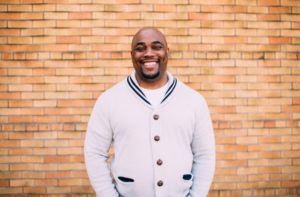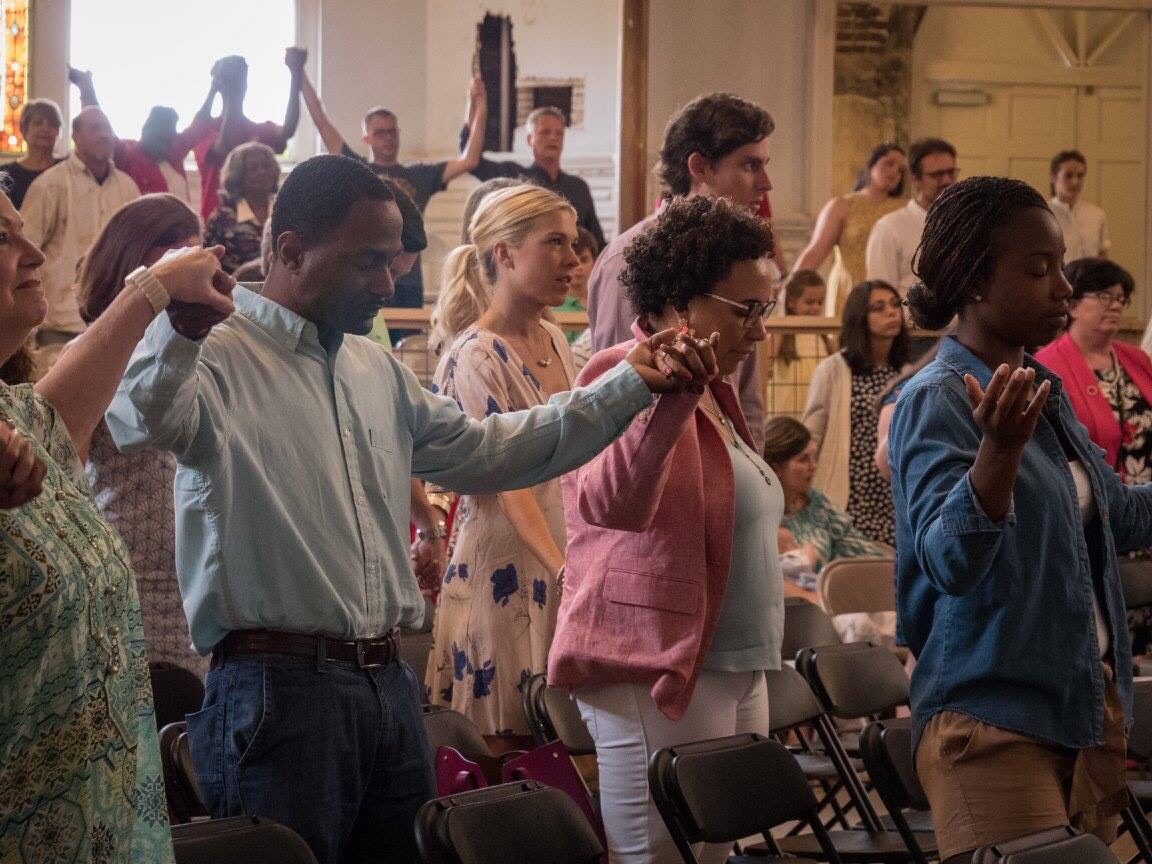Video Courtesy of The Gospel Coalition
For two and a half years, Ja’mel Armstrong and Matt Ness have jointly led One Church, a congregation striving to be diverse in a neighborhood in Louisville, Ky., that is more interracial than most.
It’s a work in progress, they acknowledge, but the African-American and white co-pastors say they believe their congregation, which is close to 50 percent black and 50 percent white, is more fulfilling than the more racially segregated churches they used to lead.
“On our own, we just didn’t feel like that’s who we were meant to be,” said Ness, who formerly led a mostly white church. “The picture we believed in was much broader than the local church I was pastoring and the local church Ja’mel was pastoring.”
The co-pastors’ congregation is part of the Evangelical Covenant Church — a small denomination that claims to be one of the most diverse in the country. One Church is part of a trend reported by scholars this month: Multiracial churches are on the rise and so is the percentage of U.S. congregants who attend them.
The percentage of U.S. multiracial congregations almost doubled between 1998 and 2012, from 6.4 percent to 12 percent, according to a study published in June in the Journal for the Scientific Study of Religion. In the same period, the percentage of U.S. congregants attending an interracial church has reached almost one in five, advancing from 12.7 percent to 18.3 percent. The 2012 statistics are the latest available.
Co-authors Kevin Dougherty, a sociology professor at Baylor University, and Michael Emerson, provost at North Park University, defined multiracial congregations as ones in which no single racial or ethnic group constitutes more than 80 percent of the people in the pews.
But the co-authors point out that interracial congregations have long faced a number of challenges. And their recent findings show that while the average percentage of black congregants in multiracial congregations has increased, the percentage of Latinos in those kinds of churches has decreased in the same period.
“When you bring groups, different ethnic groups, together in a congregation, they come with different cultures, and those cultures include all types of expectations,” said Dougherty, citing music styles and food choices. “To help them develop a sense of shared identity above and beyond those cultural differences is a key part of the adaptability necessary for a multiracial congregation to succeed.”
Ness, co-pastor of the Louisville church, alternates preaching with Armstrong. He said before One Church opened its doors, they formulated a nontraditional approach to music. The worship team includes a gospel-style keyboardist, a blues, rock and country guitarist and a jazzy drummer and bassist. Singers represent a range of genres.

Ja’mel Armstrong is a pastor at One Church, an interracial congregation of the Evangelical Covenant Church, in Louisville, Ky. Photo courtesy of One Church
“We didn’t want to be defined by a particular style and so we didn’t tell you to stand up. We didn’t tell you to lift your hands. We didn’t tell you how to worship,” said Armstrong. “The goal was: If you are naturally contemplative in your worship style, then you be that. If you are naturally expressive, then you be that.”
It didn’t work for everyone. Armstrong said there was a gradual “mass exodus” from the 250-attendee first service in January 2016, with the congregation dropping to about 50. The congregation has since doubled to 100 after attracting new congregants.
The Rev. Michael Davis, the African-American teaching pastor at 10-year-old Downtown Church in Memphis, Tenn., said intentionality is key to multiracial churches. His congregation strives to have leaders of different races regularly preaching and making announcements. The church avoids identifying with political parties and instead seeks to foster an environment where various viewpoints can be aired.
“So nobody is trying to suffocate the identity of any of our minorities,” said Davis, who co-leads the fledging congregation with its white founder, Richard Rieves. “It’s intentionality, it’s empowerment and it’s sacrifice.”
The congregation, which Davis calls a “multiracial/class plant” or offshoot of the mostly white Second Presbyterian Church, meets in Clayborn Temple, a historic church that once housed a predominantly white congregation and later a mostly black one.
But Davis acknowledges that his Evangelical Presbyterian Church congregation that is 70 percent white and 30 percent minority (mostly blacks but including some Asians and Latinos) hasn’t achieved all its milestones toward integration, including among its smaller community groups attended by some of the 300 who worship together on Sunday.
“Are we doing it perfectly?” Davis said. “No. Because there are some times where I have to talk to some of my groups that are predominantly white and say, ‘How do we get more diversity?’”
As they strive for inclusiveness, leaders of multiracial churches say they sometimes feel like they are on their own without many role models.

Worshippers gather at the Downtown Church, a multiracial congregation of the Evangelical Presbyterian Church in Memphis, Tenn. Photo courtesy of Downtown Church
Ness, 39, who has pastored for 16 years, said, “I feel like I’m brand new at my job when I started this.” Armstrong, 38, agreed that the nontraditional church stands out from others: “We almost feel a lot of times that we’re on an island.”
The Rev. Susan Brooks Thistlethwaite, a Chicago Theological Seminary professor, informally polled former students and found they have seen evidence of the new survey’s findings about the growth of interracial congregations.
“One woman graduate who identified as white indicated that she had ‘pastored a black church for seven years,’” said Thistlethwaite, whose seminary is affiliated with the United Church of Christ. “A number of graduates emphasized, however, that there have been congregations that have been racially diverse for many years, with racially diverse pastoral leadership.”
The survey, based on data from the National Congregations Study, also found an increase in black clergy leading multiracial congregations, rising from less than 5 percent in both 1998 and 2006 to 17 percent in 2012.
The Rev. Cheryl Townsend Gilkes, professor of African-American studies and sociology at Colby College, said the willingness of white congregants to join churches with black pastors is a positive sign, given the long history of segregated Sunday morning services.
“Although white people have always been willing to appropriate style and music from black churches, they have resisted black leadership,” Gilkes said. “This new moment in American religious life could be quite helpful in countering many negative current events in the area of race relations.”
Despite the challenges of interracial cooperation, Davis said, he sees rewards as he helps lead his Memphis congregation.
“I experience the body of Christ more, the wider scope of it, and so it broadens my perspective of who the Lord is,” he said. “Being in a multiracial church, you see the beauty of different cultural backgrounds, different walks of life.”
